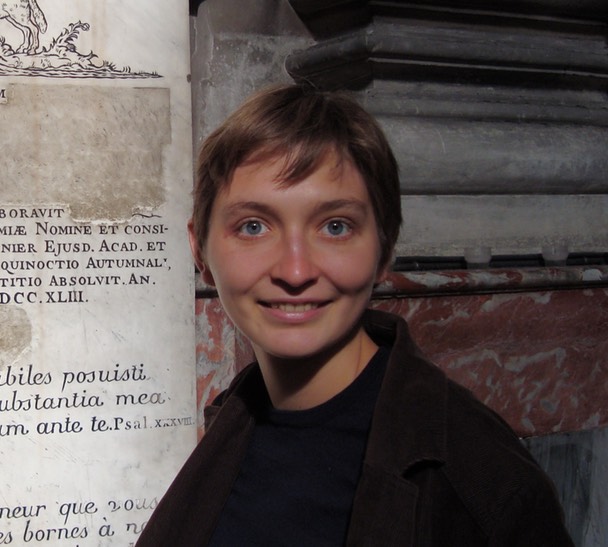Maya Maskarinec, Fall ’05, was awarded the Phyllis G. Gordan Pre-Doctoral Rome Prize for Medieval Studies by the American Academy in Rome. She is currently in the Department of History at the University of California, Los Angeles. Her dissertation topic is: Building Rome Saint by Saint. Sanctity from abroad at home in the city (6th-9th century). Ms Maskarinec joins a group of approximately 75 Rome Prize winners who were ICCS students, ICCS faculty members, or both.

Below are some questions we asked Ms. Maskarinec.
How did you become interested in pursuing a career in medieval studies? My interest in studying Rome in the Middle Ages stems from my time at the ICCS. I came to Rome as a Classics major, naively expecting to find the ancient city as described in Virgil or Livy. Instead what I found shocked,—and captivated me: a city of layers, whose fabric and history had been reused and recycled throughout the centuries. After the ICCS program—a panoramic sweep through Roman history from its beginnings through Late Antiquity—ended, I wanted to know what came next. The period of Late Antiquity and the early Middle Ages especially fascinated me in terms of how the city reinvented itself. Eighth-century Rome was a paradoxical place. Once the head of the expansive Roman Empire, the city had shrunk (physically, economically and politically) into a shadow of its former imperial self. Yet in its reincarnation as a Christian ‘urbs sacra’ Rome increasingly asserted its trans-local, universal, and even extra-terrestrial preeminence. I decided I wanted to study this remarkable transformation.
How has your ICCS education benefited you in your subsequent studies and work?
My ICCS education provided me with the skills necessary for studying Rome through the ages. Through the site visits I became acquainted with the city, in its ancient, medieval, Renaissance and modern guises. I discovered the joy of walking through Rome, continually discovering something new. The Latin and Greek courses at the Centro furthered my ability to interact critically with the city and I learned to juxtapose written and material evidence. Most of all, the joy of exploring Rome and the enthusiasm of the Centro professors, students and staff (and the delicious food) made me eager to study—and return to—Rome.
How will the Rome prize assist you in your research and your career?
Currently I am working on my dissertation project, entitled "Building Rome Saint by Saint. Sanctity from abroad at home in the city (6th-9th century)."
Here is a brief description of my project:
My project situates the development of early medieval Rome as an “urbs sacra” in its wider Mediterranean and Carolingian contexts, from the sixth to the ninth century. I examine how the circulation of sanctity throughout the Mediterranean World brought saints’ cults to Rome, which contributed to fashioning Rome into a cosmopolitan cultural center that could even radiate abroad its practices of commemoration. Case studies examine the differing circumstances through which “foreign” saints were imported to Rome and subsequently adapted to Rome, illustrating how these cults and their communities helped renegotiate the city’s ancient legacy of Empire, its relationship to Constantinople, and Rome’s—and the papacy’s—place in Christian history. This reveals a city enmeshed in a wider world, whose distinctive profile of sanctity was not autochthonous or predestined, but which gradually developed, drawing on the far-flung resources of the medieval world and secured not only in the city itself, but also north of the Alps.
My project stands at the intersection of the intertwined discourses of hagiographical texts, sacred objects and urban contexts, relying on textual traditions, architectural and artistic remains and a firm grasp of Roman topography. Much of the primary evidence is available exclusively, or most readily, in Rome, as is much specialized scholarship on all aspects of this topic. During my year in Rome I hope to examine this evidence, while at the same time benefiting from the community of scholars at the American Academy, as well as at Italian institutions and other academies throughout Rome.